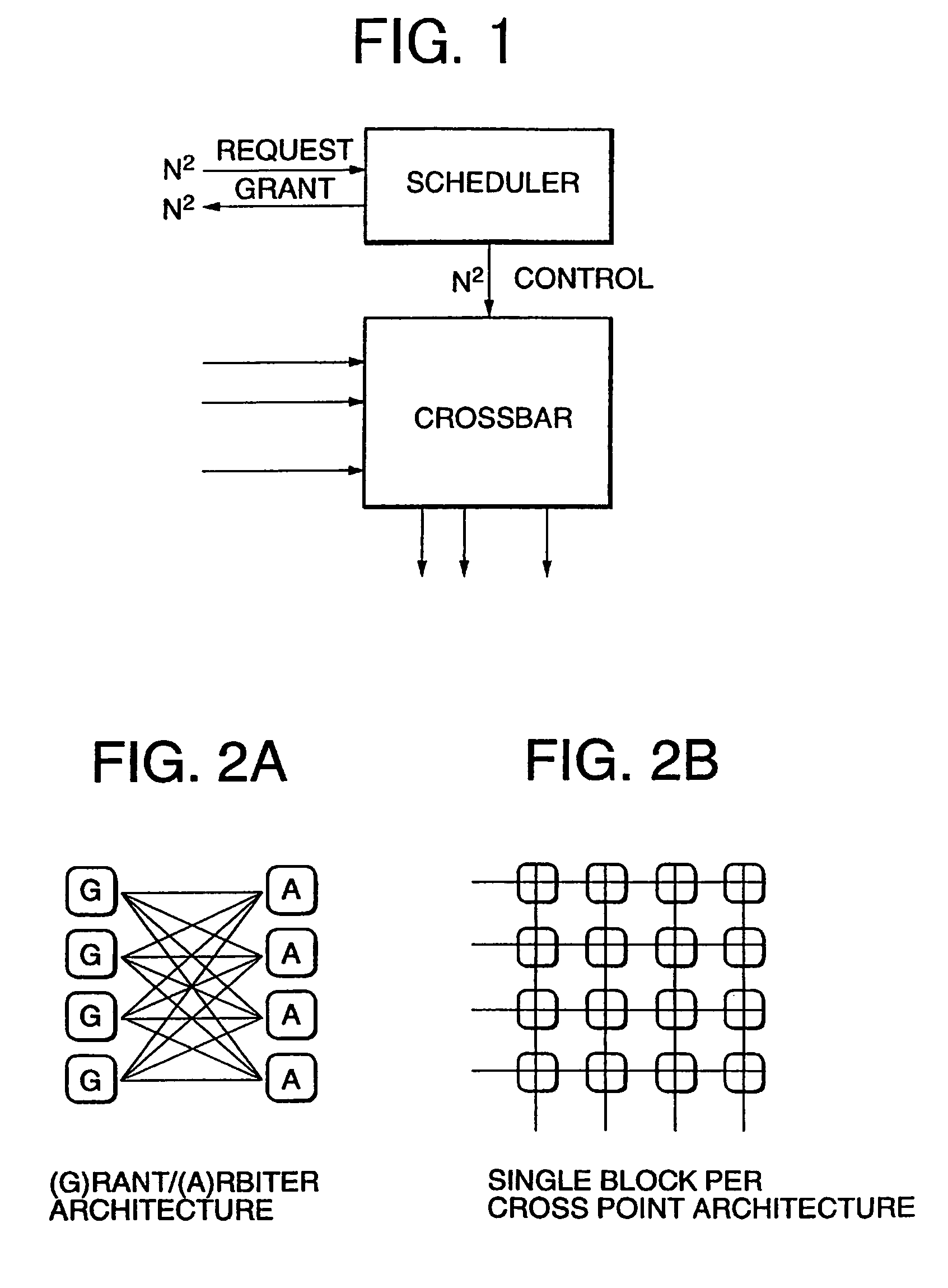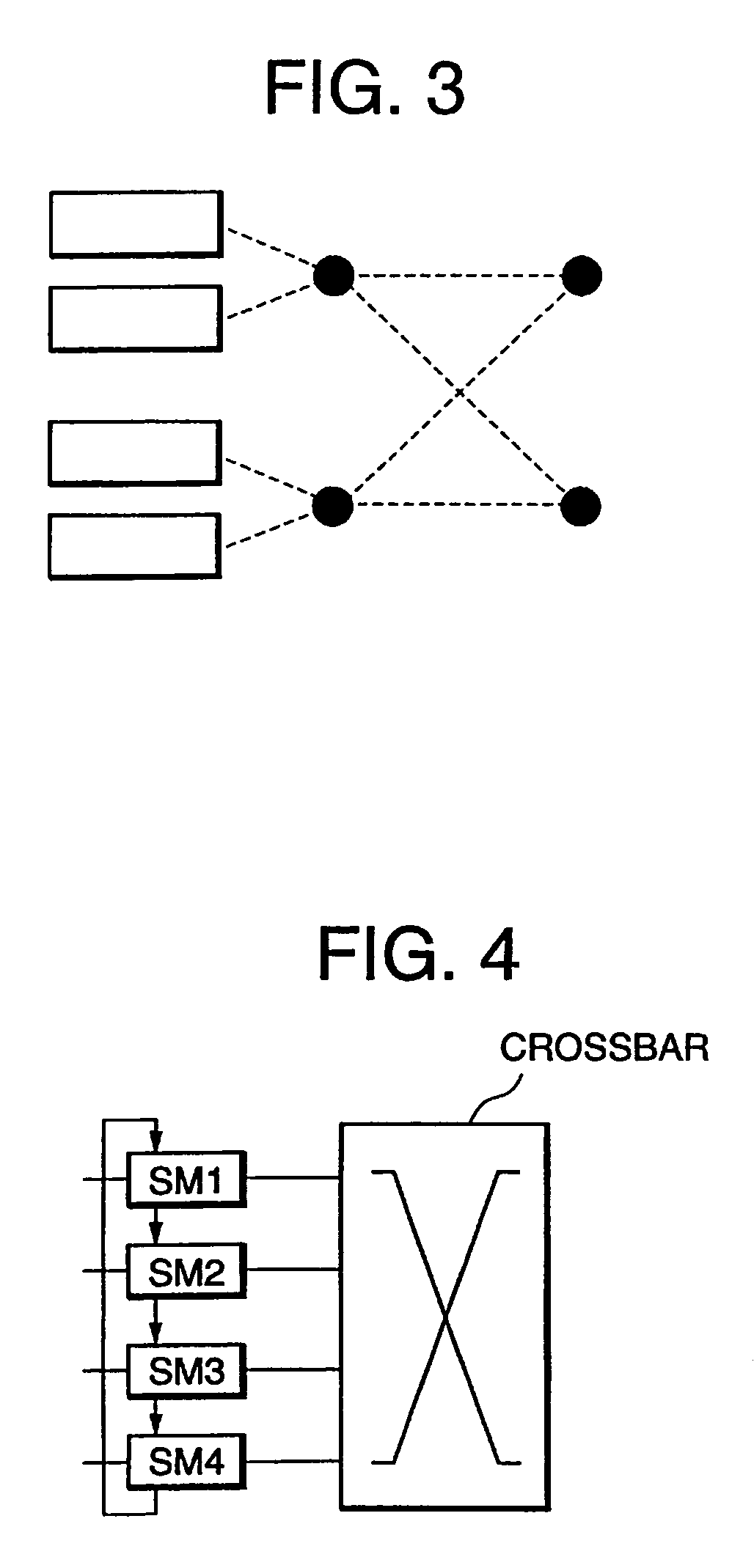Pipelined packet scheduler for high speed optical switches
a high-speed optical switch and packet scheduler technology, applied in data switching networks, multiplex communication, digital transmission, etc., can solve the problems of complex sequence of time slots for sm to pick output ports, long-known head-of-line blocking of input buffered switches, and the theoretical limit of 58.6% in total throughput, so as to simplify the implementation and control of rrgs
- Summary
- Abstract
- Description
- Claims
- Application Information
AI Technical Summary
Benefits of technology
Problems solved by technology
Method used
Image
Examples
Embodiment Construction
[0064]According to a first aspect of the present invention, the time axis, discussed above, is further divided into slot frames, each of which being simply a sequence of N consecutive slots. Thus, time can be regarded as a sequence of frames. In order to establish a criterion to resolve collisions among competing SMs, a priority matrix is used. An N×N priority matrix is a matrix which defines an ordered sequence of SMs to visit a given time slot in the future. The row of the matrix indexes a slot in the current frame, which is the frame containing the current system slot. The column of the matrix indexes the slot in the next frame to be visited. An element of the matrix specifies which SM should “visit” the slot in the next frame dictated by the column index.
[0065]FIG. 7 shows a 4×4 priority matrix and FIG. 8 shows a pipelined sequence of visits to time slots for the priority matrix of FIG. 7. It is noted that a pipelined decision process is already contained in the use of a priorit...
PUM
 Login to View More
Login to View More Abstract
Description
Claims
Application Information
 Login to View More
Login to View More - R&D
- Intellectual Property
- Life Sciences
- Materials
- Tech Scout
- Unparalleled Data Quality
- Higher Quality Content
- 60% Fewer Hallucinations
Browse by: Latest US Patents, China's latest patents, Technical Efficacy Thesaurus, Application Domain, Technology Topic, Popular Technical Reports.
© 2025 PatSnap. All rights reserved.Legal|Privacy policy|Modern Slavery Act Transparency Statement|Sitemap|About US| Contact US: help@patsnap.com



